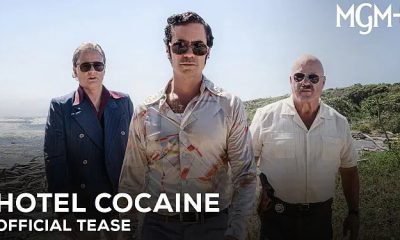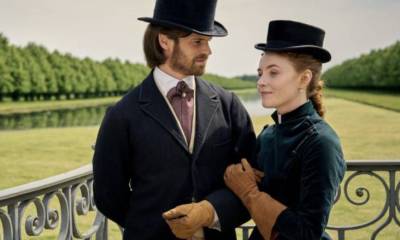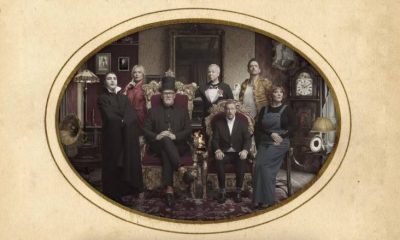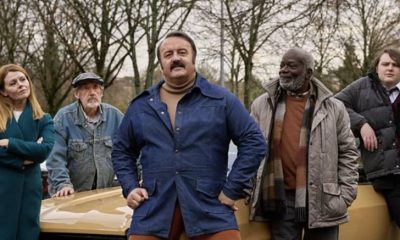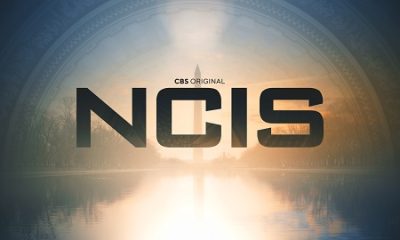Features
The Story of Lassie
“Daddy, tell me a story’ pleaded the little daughter of author Eric Knight back in 1938 on a farm in Bucks County, Pennsylvania. It had been a chronic cry of the little girl whose father was a best-selling storyteller of such works as The Flying Yorkshireman.
Knight concocted a sentimental tale about a faithful collie dog, separated from her poor but honest young master, who makes a tortuous, 200-mile journey from Scotland back to England and the arms of her family. At the urging of his wife, Knight wrote and peddled the story to the old Saturday Evening Post. It was such a hit that a publisher, Winston, persuaded him to expand it into a full-length book. Knight did, and it was published in 1940 under the title Lassie Come Home.
Seeing its possibilities as a film, MGM producer Sam Marx contacted Knight and bought the right to Lassie for the meager sum of $8,000, that included all theatrical rights in perpetuity. Neither Knight nor his heirs ever saw another penny from Lassie.
By 1942, Marx had developed a script from Knight’s book, but was having a real problem: he couldn’t find a dog. It was a well known fact that pure-bred collies are impossibly high-strung animals. An urgent call was sent out to every major trainer, kennel and dog show in the country. Desperate, Marx “auditioned” 300 yapping pooches in the old Hollywood Stars baseball park, all to no avail.
Among the rejected rovers was “Pal,” owned by a trainer named Rudd Weatherwax. The runt of an unpedigreed litter, Pal had the unpleasant habit of chasing cars. Weatherwax, who ran a kennel, had in fact acquired the dog in payment of a $10 kennel (he ran a kennel) debt. Not knowing what to do with the animal, Rudd turned him out on a friend’s ranch to run wild.
There he might have remained forever if it had not been for two things. One was a violent rainstorm in the San Joaquin Valley, and the other was the persistence of Weatherwax. Knowing full well the difficulties of training pure-bred collies, he kept boring in on and being rejected by Marx.
Just then, the San Joaquin River overflowed its banks. Marx got a hurry call from the production office: if he could get a dog and a second unit contingent upstate within 24 hours, he would have the most exciting adventure material ever seen in a B-picture (which Lassie Come Home started out as). Marx pictured the whole thing in his movie-minded mind: courageous collie, half dead with weariness, fights the raging torrent in order to be reunited with Roddy McDowall. All wet dogs looked alike, Marx reasoned. Later he could find the right one. Right now, though, he had to move fast. He hired Pal.
Pal performed like a trooper. The director, Fred Wilcox, puts it this way: “That dog dove into the river as Pal but he came out Lassie.”
The film was a smash, out-box-officed Mrs. Miniver at New York’s Radio City Music Hall, and plans were set immediately to film a sequel and another and another and another. Lassie was being touted as “Greer Garson with fur” and MGM placed her on its star roster between Hedy Lamarr and Myrna Loy. Six sequels followed, each one turning a tidy -profit. But by 1950, inexpensive series pictures were a drag on the market due to the inroads made by the new medium, television. So, in 1952, the studio gave Weatherwax rights to the property in lieu of the $40,000 it still owed the trainer on his contract, a decision MGM is ruing to this day.
The TV Lassie
Weatherwax turned Lassie over to a shrewd producer named Robert Maxwell (in return for ten percent of the profits) who made a deal with CBS for a television series based on the Lassie films, but with continuing characters. Maxwell began shooting the first of the Lassie TV shows in 1953, and on September 12, 1954, the program premiered.
TV Guide’s listing for that show: “The famous Hollywood canine will be featured in a series of dramatic stories starring Tommy Rettig as her master. In the first film, young Jeff Miller inherits Lassie from a relative but is puzzled by his new pet’s strange behavior. Lassie keeps returning to her former home until Jeff finally learns the dead master’s secret.”
Tommy Rettig, then nearly thirteen, played Lassie’s little master for three seasons. Starring with him were former musical star Jan Clayton as his widowed mother Ellen, and character actor George Cleveland as Gramps. However, Lassie was clearly the star. She alone received 2,000 fan letters every week, compared to the 3,000 received by the rest of the cast. Her salary was $1,500 per show, but she earned $2,000 for a personal appearance (county fairs, supermarket openings, etc.), making her one of the few animals who grossed over $100,000 a year.
But in October, 1956, Maxwell decided to sell Lassie, thereby making the same mistake his predecessors had: He underestimated the animal’s staying powers. However, at the time, it seemed a good idea. The bland Middlewestern farm format, the boy, the dog and the lovable grandpa looking out for the widowed mother, was wearing thin. And Rettig, right smack in the middle of puberty, was beginning to look too mature for the role. How long could a good thing last, he reasoned.
So when an oil-rich young Texan named Jack Wrather came into the scene and offered $3,250,000, Maxwell jumped. The latter was retained as Lassie’s producer.
Problems with the cast, aside from Rettig’s spurt in growth, began. Rettig’s mother, an ambitious woman who was quick to realize that her son was pivotal, needed to be appeased constantly. Ultimately, this caught up with Jan Clayton whose personal fondness for Tommy fanned her resentment of Mrs. Rettig’s attitude. Weatherwax had his problems, too. The original Pal, by the time the TV show came around, was too old. So Rudd pressed into service Pal’s son. Pal II, the original TV Lassie. (In 1957, Pal 111 took over the role, and, in 1961, figured in a divorce suit brought by Mrs. Weatherwax, who asked for a “division” of the dog, whose value she placed at $100,000.)
Crisis Beckons
The first big crisis occurred, predictably, in early 1957. Tommy was too old, Jan Clayton felt she was in a creative rut and the wholesome farm wardrobe was beginning to bug her, and Cleveland turned sick and eventually died in July 1957.
Maxwell and Wrather held a summit meeting. How to ease out the old and bring in the new without shaking up Lassie’s hardcore following (some 33 million viewers) too much. It was as delicate as a surgical operation. Wrather had spotted seven-year-old Jon Provost in a movie. Escapade in Japan, the boy’s tenth film. He was a wistful child, small for his age (a requisite). Maxwell, who wrote the transition script (“The Runaway,” which aired in September, 1957), decided to make him into an orphan who arrives unexpectedly at the Miller farm. He would be welcomed by Tommy Rettig and Miss Clayton, who then, after a decent interval (less than 13 weeks), would be shipped off to the big city. Lassie would be inherited by young Provost as the new boy, Timmy, who in turn would inherit a new set of parents through adoption.
Cloris Leachman and Jon Sheppod became the parents, and a fine character actor, George Chandler, was added as Uncle Petrie to, more or less, replace the deceased Cleveland. The year of Leachman and Sheppod and Chandler was one of the stormiest in show business history, a year of sharp personality conflicts and falling ratings. Miss Leachman, who, of course, went on to TV stardom as Phyllis Lindstrom on The Mary Tyler Moore Show and her own show, was a New York actress who was temperamentally unsuited to her Lassie assignment, which she described as “playing house.” She immediately fell into conflict with Chandler, and the two of them fought bitterly for the entire season she was there. She just couldn’t understand why the dog got all the close-ups. Sheppod, new to the business, was too unsure of himself to help matters any. And Chandler suffered by comparison to Cleveland.
The Lassie farm became a cold and somehow forbidding place. Viewers noticed, too, and sent letters of protest to the network, saying that Leachman and Sheppod were “too stiff.” Wrather took over (Maxwell had departed by this time), dumped the two parents, “deemphasized” Chandler (later he was dropped altogether), and imported a new parental team, June Lockhart and Hugh Reilly.
It worked magically. For almost seven solid seasons Provost played Timmy Martin in 156 Lassie shows. Lockhart and Reilly were taken to the bosoms of America until, alas, September 6, 1964.
The show, the first of the new season, began like any other Lassie episode. A prerecorded whistler trilled the theme song, a juvenile voice hollered “L-a-s-s-i-e!” and 35 million viewers settled back for another half-hour with the peripatetic collie. When it ended, loyal Lassie-ites were shocked. June Lockhart, Hugh Reilly, and Jon Provost has wrung out final farewells to Lassie, punctuated by crescendos of weepy violins. Yes, dog-eared (sorry) Lassie was getting a new look.
This change had been in the planning stages since March, 1963, when the Wrather Corporation suddenly realized that Jon Provost, like his predecessor Tommy Rettig, had become too old for the part, thirteen. The company also discovered that the shows were getting redundant. They lacked freshness. People were beginning to tire of that old farmhouse near Calverton. So in December the cast was forced, by contract, of course, to participate in a bizarre ceremony: its own execution. Two possible endings were shot; Wrather called them “two separations.”
The one that aired was a five-part Lassie saga, filmed on location in the Sierras. It was a story of survival, much like the original Lassie Come Home story thought up in the late 1930s. The Martins journeyed to Lake Superior for vacation where Lassie, Timmy, and the father embarked upon a fishing trip. A quick squall materialized, the fishing boat overturned, and Lassie was separated from Provost and Reilly. The dog was miraculously saved by a forest ranger and nursed back to health for four succeeding half-hours. At the conclusion of the five parts, Timmy and his parents conveniently reappeared, reclaimed the dog and returned to the farm. This series of episodes was a definite attempt to introduce a character and see how he would be accepted by the public.
The first of the epic quintet was aired in early February, 1964. This and the four other adventures made big news. Lassie was back in the Top Ten, an almost unheard of situation for a show on the air that long (ten years).
Robert Bray, the actor who played the forest ranger, Corey Stuart, was an immediate hit. Fan mail poured in, and it was evident to the Wrather folk that the Martin family needed to be “killed off.” It was important to the storyline that the Martins would have to go some place where they couldn’t take Lassie with them.
Running out of steam
At first, the producers favored the idea of having Paul, the father, join the Peace Crps, until Sargent Shriver’s office in Washington revealed that the Peace Corp didn’t forbid dogs. The solution, after many hours of research, turned out to be Australia. The Martins would be dumped into the Australian bush as homesteaders, giving up the lush life in America to till poor farmland overseas.
As the final farewell script was written, the family began packing for the long trip when they discovered they could not take Lassie along. The dog would need to be quarantined in England for six months before being allowed entry into Australia. Naturally, it would have broken Lassie’s heart to be penned up for a half a year, so the Martins left her with a neighbor. Cully, played by Andy Clyde. This was the first of three transitional episodes. Two weeks later. Bray, as Ranger Stuart, was reintroduced in a touching scene with Lassie. Cully was stricken with a heart attack and Lassie sumn\ons Stuart to help the old codger. Unable to care for the dog. Cully gives her to Stuart, rounding out the final sequence, and giving Lassie a new look, and a new star.
Bray was one of half a dozen actors tested for the part. Finally the field was narrowed down to two men—Bray and a well-known Western player. The producer, the sponsor, and the ad agency people all preferred the “name” actor. But Lassie liked Bray, and so did millions of viewers, who soon forgot all about the family far away in Australia. Bray played the role through the 1971 TV season, when Lassie was cancelled by CBS and went into syndication.
If someone had told Eric Knight what was going to result from his innocent tale. . . .






